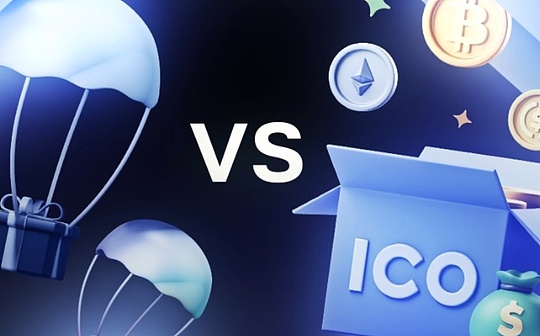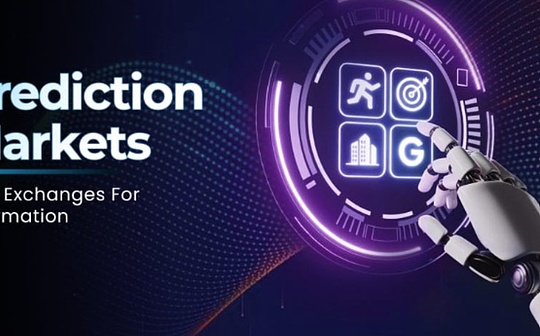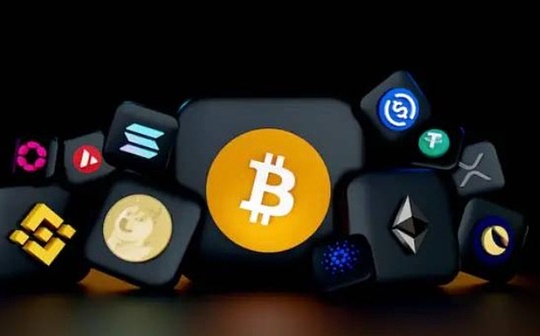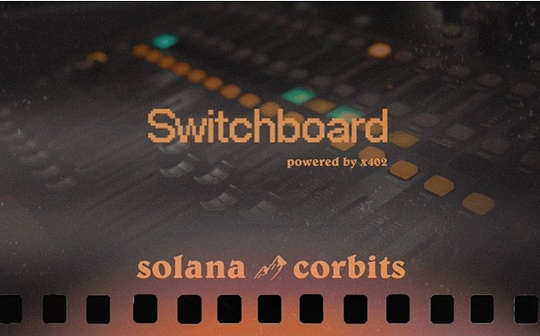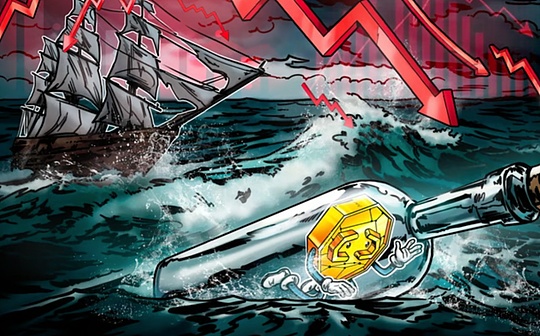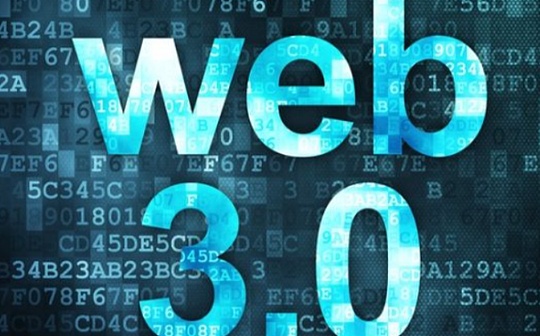
From December 31, 2024 to January 1, 2025, Chawen Blockchain held a New Year’s Eve sharing with the theme of “Together to the new era of web3.0” and many experts in the Web3.0 fieldKa has made insightful insights on the Web3.0 field review 2024 and prospects 2025, and is very colorful.Zhang Feng, partner of Wanshang Tianqin Law Firm, was invited to participate and shared the integration of data assets, crypto assets and RWA and its market opportunities.
1. Data assets, crypto assets and RWA tend to integrate
The integration of data assets, crypto assets and RWA refers to the integration of three practices: the role of data elements, decentralized crypto assets and issuance and transactions of RWA. In essence, it can be considered to be the data resources owned by enterprises or individuals based on cryptography.The principled decentralized crypto assets and various assets in the real world are organically combined and innovatively applied through blockchain and other technologies.
Asset digitalization
The integration of data assets, crypto assets and RWA is also a process of asset digitization and digital assetization.RWA is a financial industry that looks at the integration of digital assets and traditional or real assets. Crypto assets are a technological geek perspective to build new assets and create new value through encryption technology. Data assets are constantly leveraging the mining of data element resources from the perspective of industrial demand.Optimize business processes to reduce costs and increase efficiency, and innovate value circulation models.And these three are ultimately integrated into real and specific application business scenarios.
RWA converts real-world assets into crypto assets on the blockchain, that is, the so-called real-world assets include traditional financial assets such as stocks, bonds, funds, accounts receivable, etc., as well as physical assets such as real estate, artworks, precious metals, etc.et al., enabling these assets to be traded and managed in the digital world, representing the process of digitalization of traditional assets.For RWA, its manifestation is crypto assets, but its value carrying is the role of data elements.
Give full play to the role of data elements, which also includes quantifying and tokenizing the value of data assets, that is, evaluating and quantifying the value of enterprise or individual data assets such as customer data, business data, etc. through specific technologies and methods, and then mapping their valueOn the corresponding digital assets, the value of data assets can be reflected and traded in the blockchain network.Essentially, valuable RWA and crypto assets are both data assets.
As a technical tool, crypto assets are a good medium for transactions and value carrying.Crypto assets such as digital currencies such as Bitcoin, Ethereum, as well as various tokens, NFTs, etc. can be used as a medium for data assets and RWA digital token transactions, or as a form of value carrying, with data assets.and RWA convert and circulate each other.Any valuable data assets and crypto assets are real-world assets, namely RWA, but their expression may be traditional or innovative.
Technology integration and innovation
Blockchain technology is the core technical support for achieving integration.Taking advantage of the decentralization, immutability, traceability and other characteristics of blockchain, it provides a trusted, secure and efficient technology platform for the integration of data assets, crypto assets and RWA, based on this, realizes ownership and transactions of various assets.Information such as records and value changes can be accurately recorded and traced, ensuring the authenticity and security of assets.
Smart contracts are the key to achieving intelligent management of assets.Through smart contract technology, automated issuance and transaction utilization of data assets, crypto assets and RWA transactions and management can be realized.When certain conditions are met, smart contracts can automatically perform the authorized use of data assets, distribution of income, and issuance, trading, redemption of RWA digital tokens, improving transaction efficiency and reducing human operation risks, thereby enhancing trust creation.value.
Value integration and enhancement
The analysis and mining of data assets can provide important decision-making basis for transactions of crypto assets and RWA.The process of digital development is essentially a process of continuous mining of data value.For example, through the analysis of market data, user data, etc., investors can better understand market trends and investment opportunities, thereby more accurately trading crypto asset investment and RWA digital tokens.
The characteristics of high liquidity and global trading of crypto assets can bring better liquidity and trading efficiency to data assets and RWA.Data assets and RWA can easily achieve global trading and circulation with the help of crypto assets trading platforms and markets, attracting more investors to participate.
RWA introduces real-world assets into the field of digital assets, expanding the application scenarios and value realization methods of assets, and promoting industrial digitalization and digital industrialization.Data assets and crypto assets can be combined with traditional financial assets and physical assets represented by RWA to create more diverse financial products and services to meet the needs of different investors and maximize the asset value.
Ecological integration and collaboration
The integration of data assets, crypto assets and RWA helps to build a unified digital asset ecosystem in which various types of assets are interconnected and interacted to form a complete value network.Different types of asset owners, investors, developers, service providers, etc. can interact and cooperate in this ecosystem to jointly promote the development of the digital asset market.
During the integration process, enterprises and institutions in different fields such as finance, technology, and data need to carry out cross-field collaborative innovation.Financial institutions can cooperate with technology companies to utilize the advantages of blockchain technology and data assets to innovate financial products and services; data companies can cooperate with crypto asset platforms to tokenize and trade data assets, etc., to achieve mutual benefit among all parties.win.
Key Points and Key Points
There are many issues that need to be considered to determine whether a project can issue RWA, including the quality of the asset itself, legal supervision, technical and infrastructure support, market and investor needs, etc., but under specific technical and market conditions, the most important thing is the income of the asset itself.Sex and market acceptance are potential investors’ recognition.
For assets to issue RWA, it is first necessary to ensure that they are real.For example, if it is a real estate project, it is necessary to have a clear property certificate to prove that the ownership of the property is clear and there is no property dispute.For financial assets, such as bonds, legal and compliant issuance documents and regulatory approvals are required.In addition, the source of assets must be legal. Taking art as an example, it cannot be obtained through illegal means such as theft and smuggling. Before issuing RWA, strict due diligence is required to investigate the source of assets, including reviewing relevant transaction records and ownership transfer documents.wait.
The quality and stability of assets ensure reliable and stable returns.If it is a physical asset, such as a real estate, it is necessary to evaluate its physical condition, including whether the building structure is safe and whether the facilities are complete.For financial assets such as corporate accounts receivable, factors such as the possibility of recycling and account age of accounts receivable should be evaluated.The value stability of assets is also critical, and the equity value of some emerging technology companies may fluctuate greatly, and when considering issuing them as RWA, they need to carefully evaluate their risk tolerance and market expectations.
During the specific issuance, the connection between prospective investors is a very critical link.Different investors have different needs and risk preferences.For conservative investors, they may be more inclined to invest in RWAs with stable returns, such as assets after tokenization of high-quality bonds.For risk-favorable investors, they may be more interested in high-risk and high-return RWAs such as the assets of equity tokenized in emerging industry enterprises.Projects require designing RWA products based on the needs of potential investors.For the issuance of RWA for data assets that many people are very concerned about, a very important factor is whether the ownership of the data assets is clear, the source is legal, the quality is stable, and whether they can generate stable cash flow.Many data service products can generate cash flow but are not stable. Such RWA may be more cautious in the market.
Challenges and risks
It is also necessary to manage relevant regulatory compliance risks during integration.Different countries and regions have different regulatory policies on data assets, crypto assets and RWAs, which may lead to compliance issues.The legal status of crypto assets in some regions is unclear, and RWA’s tokenized issuance and transactions may involve securities regulations, etc.For different projects, a sound compliance framework is needed to ensure that the integrated projects comply with local laws and regulations.
Blockchain technology itself also has problems such as scalability, performance, and smart contract vulnerabilities. These problems need to be controlled during integration so that they do not affect the integration effect and security.Blockchain network congestion may lead to transaction delays and increased costs, and vulnerabilities in smart contracts may be exploited by hackers, resulting in asset losses.
The price fluctuations in the crypto asset market are large, which increases the speculativeness of the market on the one hand, but may also affect the product value and investor returns after being integrated with data assets and RWA.Therefore, it is necessary to adapt to the investment value and cycle management with the characteristics of crypto assets.
In addition, in the convergence process, the security and privacy protection of data assets are crucial.If data is breached or abused, it can cause huge losses to businesses and individuals.Effective data security measures, such as encryption, access control, etc., need to be taken to protect the security and privacy of data.
2. Data assets, crypto assets and RWA: Provide opportunities for each other in convergence
Data assets, crypto assets and RWA will provide each other with market opportunities in the convergence of specific business scenarios.The difficulty of data assetization lies in value quantification, while crypto assets and RWA provide a good carrier; the key point of crypto assets lies in value carrying, while data assets and RWA provide full value support; the key point of RWA lies inRegulatory provides trust, data assets and encryption technologies with ready-made solutions.It can be said that the integration of the three provides new opportunities for their respective development.
Financial field
Traditional financial assets such as stocks, bonds, real estate, etc. are digitized and combined with crypto assets to create more liquid and innovative financial products, such as RWA digital bonds and digital tokens for real estate investment trusts (REITs).etc. to meet the diverse investment needs of investors.
Using the decentralized, immutable and traceable characteristics of blockchain technology, we can achieve rapid settlement and clearing of financial transactions and reduce transaction costs and risks.For example, through smart contracts, automatically perform financial transactions, reduce manual intervention and intermediate links, and improve transaction efficiency and accuracy.
Data assets can provide financial institutions with richer and more accurate customer data and market information, helping financial institutions make more accurate risk assessments and investment decisions.For example, using big data to analyze customers’ credit risks, investment preferences, etc., to provide investors with personalized investment advice and risk management solutions.And these integrations may more effectively realize the current and monetization of such assets.
Supply Chain Area
Use the immutable and traceable characteristics of blockchain to build a supply chain traceability system to ensure the quality and safety of products.Consumers can obtain information on the entire process of product production, processing, transportation, etc. by scanning the product QR code, and enhance consumers’ trust in the product.At the same time, for products with quality problems, they can quickly trace to the source of the problem and take effective measures to deal with it.Through blockchain technology, various data assets on the supply chain, such as order data, logistics data, quality data, etc., to realize data sharing and collaboration among all participants in the supply chain, and improve the synergy efficiency and response speed of the supply chain.All participants can obtain key information on the supply chain in real time, adjust production plans and logistics distribution in a timely manner, and reduce inventory costs and out-of-stock risks.
Blockchain technology can ensure the transparency and traceability of logistics, information flow and capital flow on the supply chain, and reduce the risks of supply chain finance.For example, further RWA is digitized in the supply chain, such as raw materials, inventory goods, etc., and innovation in supply chain finance is achieved through crypto assets.For example, suppliers can convert accounts receivable into RWA digital assets and raise funds in the form of crypto assets to improve capital turnover efficiency and reduce financing costs.
Digital copyright field
Blockchain technology can provide more effective means of protection and protection of digital copyrights.By recording information such as creation, release, and transaction of digital works on the blockchain, we can realize the decentralized rights confirmation and evidence storage of digital copyrights, ensuring the uniqueness and immutability of copyright.Once an infringement occurs, the creator can quickly protect his rights through the evidence storage information on the blockchain, reducing the cost and difficulty of protecting rights.
Use digital copyrights as data assets for rights confirmation and evaluation, and then realize transactions and financing of digital copyrights through the combination of RWA and crypto assets.Creators can combine their digital works with NFT and digitize RWA, and issue corresponding crypto assets. Investors can purchase these crypto assets to obtain copyright income rights for digital works, providing new financing channels and business for the digital copyright industry.model.
Through the convergence of RWA and crypto assets, digital copyrights can be more easily traded and circulated around the world, expanding the market space and audience of digital copyrights.For example, global investors and consumers can purchase and appreciate digital works from all over the world through crypto asset trading platforms, promoting the international development of the digital copyright industry.
Other fields
Represented by the new energy industry, new energy assets such as photovoltaic power plants, wind farms, etc. can be digitized, and financing and transactions can be achieved through crypto assets.According to public information, GCL Energy and Ant Digital Technology jointly completed the RWA project based on photovoltaic physical assets, with financing exceeding 200 million yuan, solving the problems of difficulty in financing clean energy and poor liquidity.
Realize the assetization of agricultural data, such as putting data on the entire process of agricultural product cultivation, production and sales into chains and becoming tradable assets, which not only creates additional benefits for enterprises, but also solves the information island problem in traditional agriculture, which helps to achieve precise marketing, brand premium and traceability services have greatly enhanced market competitiveness and consumer trust.
For cultural heritage attractions or historic buildings, it can be digitalized and created through the combination of RWA and crypto assets, and sold to tourists around the world in the form of non-fungible tokens (NFTs), while protecting precious cultural heritage.Create new sources of income and promote the development of cultural tourism.



